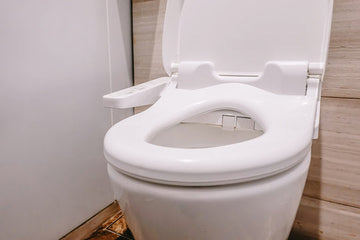Bidets are a fantastic addition to any bathroom, providing improved hygiene and comfort. However, like any plumbing fixture, they can occasionally develop leaks. Whether you're a seasoned professional or new to handling bathroom fixtures, learning how to stop bidet leaks can save you time, money, and unnecessary hassle. Understanding the common causes and solutions for bidet leaks is essential for maintaining the efficiency and longevity of your fixture.
In this article, we'll delve into the most effective ways to address bidet leaks. From identifying the source of the leak to implementing the right solutions, we aim to equip you with the knowledge and confidence to tackle this issue head-on. Additionally, we'll explore some preventive measures to help you avoid future leaks altogether.

Common Causes of Bidet Leaks
Before you can fix a leak, it's crucial to identify its source. Bidet leaks can stem from various issues, including faulty connections, damaged hoses, or worn-out washers. Each of these problems requires a specific approach for resolution, and understanding them can significantly aid in your troubleshooting efforts.
Faulty Connections
One of the most prevalent causes of bidet leaks is a loose or faulty connection. Over time, the connections between the bidet and the water supply can become loose, leading to leaks. These leaks often occur at the point where the bidet hose connects to the water supply or the bidet itself. Ensuring these connections are tight and secure can prevent leaks from occurring.
Damaged Hoses
Another common cause of bidet leaks is a damaged or worn-out hose. The hoses that supply water to the bidet can deteriorate over time, especially if they're exposed to harsh cleaning agents or excessive pressure. Inspecting your hoses regularly and replacing them when necessary can help prevent leaks.
Worn-Out Washers
Washers play a vital role in preventing leaks by providing a watertight seal between connections. However, these small components can wear out over time, especially in high-use environments. Replacing worn-out washers is a simple yet effective way to stop bidet leaks at their source.
Steps to Fix Bidet Leaks
Once you've identified the cause of the leak, it's time to take action. Here are the steps to fix common bidet leak issues:
Tightening Loose Connections
Start by turning off the water supply to the bidet to prevent further leakage. Then, use a wrench to carefully tighten any loose connections. Ensure you're not over-tightening, as this can cause damage to the components.
Replacing Damaged Hoses
If a damaged hose is the culprit, it's important to replace it promptly. Begin by shutting off the water supply and disconnecting the hose from the bidet and the water source. Install a new hose, ensuring all connections are secure and leak-free. For more detailed guidance, check out this helpful wikihow guide on using and maintaining bidets.
Changing Worn-Out Washers
Replacing washers is a straightforward process. Turn off the water supply, disassemble the connection where the leak is occurring, and replace the old washer with a new one. Reassemble the connection and turn the water supply back on to test for leaks.
Preventive Measures for Future Leaks
Preventing bidet leaks is as important as fixing them. Here are some preventive measures you can take:
- Regular Maintenance: Regularly check all connections, hoses, and washers for signs of wear and tear. Early detection can prevent leaks and extend the lifespan of your bidet.
- Use Quality Parts: Investing in high-quality replacement parts can make a significant difference in the performance and durability of your bidet.
- Avoid Harsh Chemicals: Using harsh cleaning agents can degrade hoses and washers, leading to leaks. Opt for mild cleaning solutions to maintain your bidet's components.
For additional tips on maintaining your bidet, consider reading about cleaning bidets with vinegar, which can help keep your fixture in top condition without causing damage.
Conclusion
Addressing bidet leaks doesn't have to be a daunting task. By understanding the common causes of leaks and knowing how to fix them, you can confidently maintain your bidet's functionality and efficiency. Remember, regular maintenance and using quality components are key to preventing leaks and ensuring your bidet serves you well for years to come.
For further insights into bidet care and maintenance, explore our other resources on topics like fixing cold bidet water and understanding if bidets replace wipes.
:max_bytes(150000):strip_icc():format(webp)/spr-bidet-attachments-test-bemis-biobidet-bb-1000-supreme-donna-freydkin-01-abaa6934a08a41d1aa2c4612086c0be8.jpg)
FAQs
Why is my bidet leaking water?
Leaks can occur due to loose connections, damaged hoses, or worn-out washers. Identifying the source is crucial for fixing the issue.
Can I fix a bidet leak myself?
Yes, many bidet leaks can be fixed with basic tools and replacement parts. However, if you're unsure, consulting a professional is advisable.
How often should I check my bidet for leaks?
Regularly inspect your bidet every few months to catch potential issues early and ensure all components are in good condition.
This article contains affiliate links. We may earn a commission at no extra cost to you.






